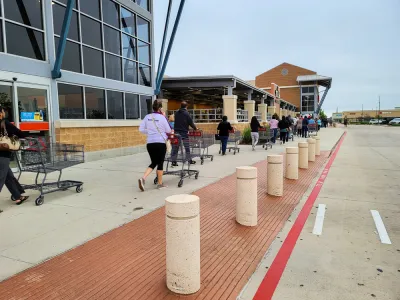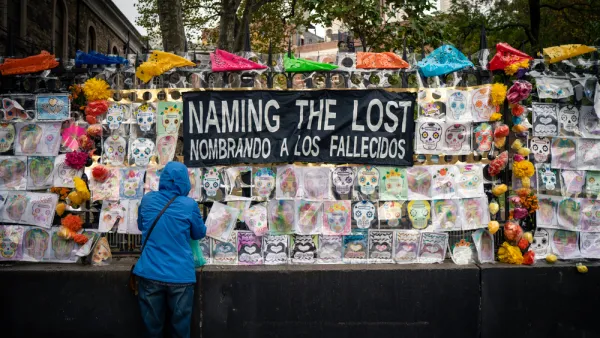Changes are coming, but they don't have to be anti-urban, and they could mean a more resilient world for cities and communities of all shapes and sizes.

Bill Fulton writes a two-part series on the future of cities after the pandemic, premising the entire exercise on two points: that cities have always existed, and that cities have also evolved. Despite the anti-urban messages gaining a larger audience as the coronavirus pandemic takes an especially heavy toll on New York City, Fulton suggests that cities are cleaner and safer than they were a century ago, and that they have thrived for a long time because they are adaptable.
Fulton takes those lessons to mean that cities will surely change as a result of the coronavirus: "The world after COVID-19 will be different — as it is after any disaster. And COVID-19 will accelerate changes that have been brewing in cities for a long time. The result will be a new kind of city, different than what we have seen before. A city that should be able to withstand shocks like COVID-19 in a sturdier fashion."
With more details on each of these points, Part 1 includes a list of predicted changes in cities and the world after the pandemic is over:
- A renewed focus on public health
- More sophisticated urban design
- Fewer retail stores and a different kind of street life
While Part 1 of the series digs into the public life and design of cities, Part 2 focuses more on the private side of life in cities:
- A changing office work environment
- More flexible public transit
- A renewed appreciation for just plain old walking
Fulton states a summarization of these predictions thusly: "Fewer stores but more bars and restaurants — and maybe a more bustling street life. More remote work and therefore more activity in neighborhoods. A more carefully constructed, safer public realm. More flexibility in getting around. All of which will make cities — and their suburbs — better places to live."
FULL STORY: Here’s what our cities will look like after the coronavirus pandemic

National Parks Layoffs Will Cause Communities to Lose Billions
Thousands of essential park workers were laid off this week, just before the busy spring break season.

Retro-silient?: America’s First “Eco-burb,” The Woodlands Turns 50
A master-planned community north of Houston offers lessons on green infrastructure and resilient design, but falls short of its founder’s lofty affordability and walkability goals.

Delivering for America Plan Will Downgrade Mail Service in at Least 49.5 Percent of Zip Codes
Republican and Democrat lawmakers criticize the plan for its disproportionate negative impact on rural communities.

Test News Post 1
This is a summary

Test News Headline 46
Test for the image on the front page.

Balancing Bombs and Butterflies: How the National Guard Protects a Rare Species
The National Guard at Fort Indiantown Gap uses GIS technology and land management strategies to balance military training with conservation efforts, ensuring the survival of the rare eastern regal fritillary butterfly.
Urban Design for Planners 1: Software Tools
This six-course series explores essential urban design concepts using open source software and equips planners with the tools they need to participate fully in the urban design process.
Planning for Universal Design
Learn the tools for implementing Universal Design in planning regulations.
EMC Planning Group, Inc.
Planetizen
Planetizen
Mpact (formerly Rail~Volution)
Great Falls Development Authority, Inc.
HUDs Office of Policy Development and Research
NYU Wagner Graduate School of Public Service





























